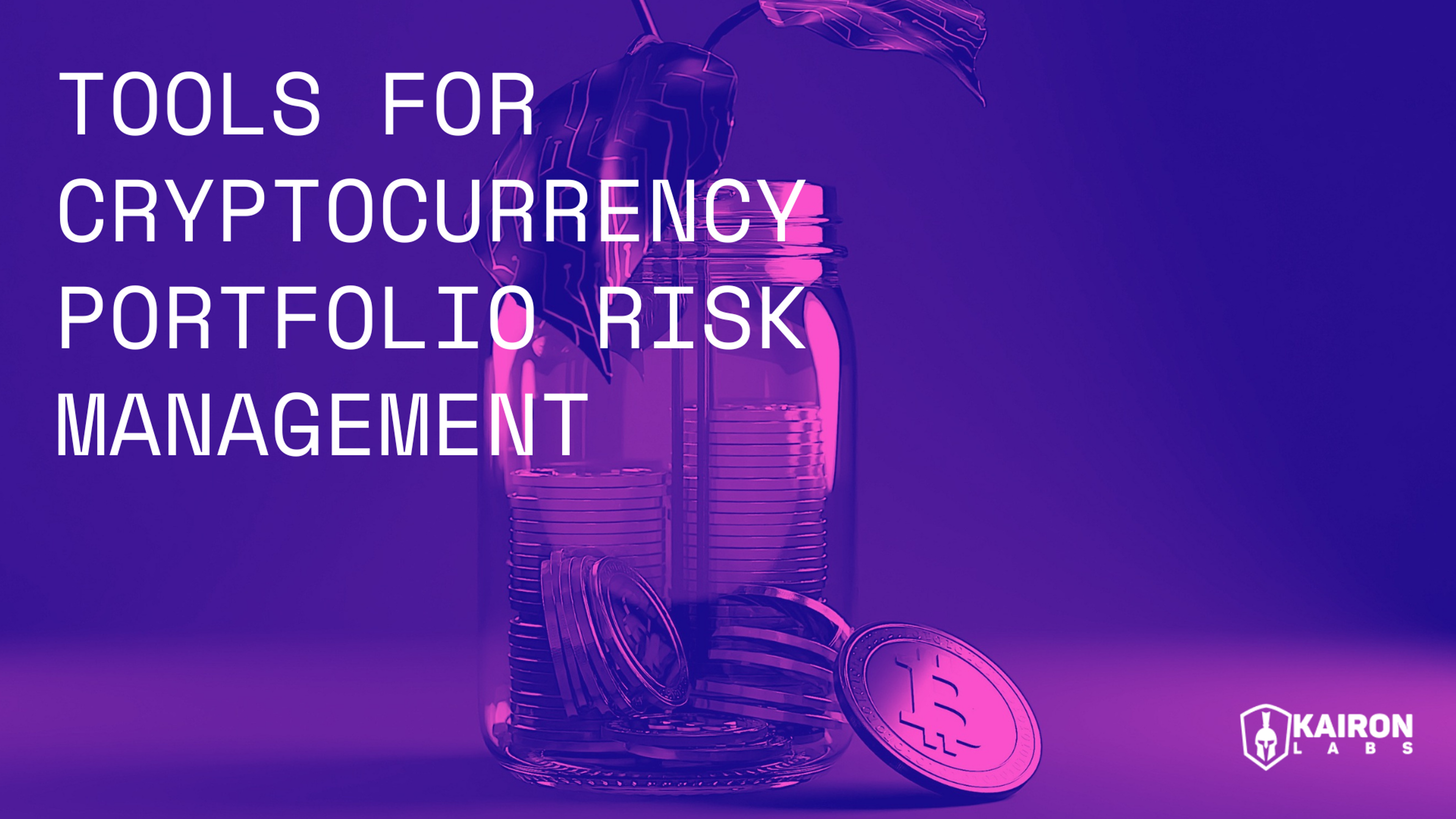
Tools for Cryptocurrency Portfolio Risk Management

Value at Risk (VaR) is a risk management measure that quantifies the potential losses on an investment over a specific period. The purpose of VaR is to give quantitative insight into the riskiness of a portfolio. VaR helps investors identify and measure their investments' risks and make informed decisions. It answers the question, “What loss level is such that we are X% confident it will not be exceeded in N days?”. The risk manager needs to set the confidence level (ex. 99%) & time horizon (ex. 1-day) parameters.
4 Methods of VaR Calculation
Let’s examine the assumptions behind 4 VaR models along with some insights into a Crypto Portfolio VaR results.
1. Model #1/4. HistSim (Historical Simulation)
HistSim involves using historical price data as a guide to what will happen in the future. Unlike the other 3 VaR methods below, there is no assumption on the shape of the probability distribution (ie. normal or normal/excess kurtosis). HistSim instead assumes the probability distribution observed for % daily changes in market risk factors in the past is the probability distribution that will apply over the next day. The risk manager might start with 366 days of historical end-of-day px data to create 365 scenarios & will update the historical data daily to maintain a rolling 366-day window. Historic day-on-day price changes are scaled relative to the current price level (ex. “Todays BTC/USDT price” * (10Jan22 price / 9Jan22 price) etc. “Todays” Cryptocurrency Portfolio Mark-to-Market (MtM) is then compared against each of the above scenarios, profit&losses are sorted as worst→best & the relevant confidence level (ex. 99%) worst case loss is shown.
2. Model #2/4. VCV (Variance-Covariance) - Equally Weighted
VCV-EW involves making assumptions with respect to the probability distribution of return on crypto prices & calculating the probability distribution of the change in portfolio value analytically. In our case, we are imposing the normal distribution assumption on crypto prices (ie. assuming the % daily change in each market risk factor has a normal probability distribution) and factoring in covariance between crypto price returns into the VaR calculation. Note that for asset classes subject to frequent jumps (ex., credit spreads, crypto prices), the normal distribution assumption is tenuous & has led to the popularity of alternative models such as #4 below.
3. Model #3/4. VCV - EWMA (Exponentially-Weighted Moving Average)
Similar to #2 but VCV-EWMA includes an additional parameter (lambda) which acts to provide more weight to more recent time series data portfolio variances & covariances. The rationale for lambda parameter inclusion is that more recent data is more relevant than older data.
4. Model #4/4. Student-t Copula
Cryptocurrency price data typically display high skewness/kurtosis. The Student-t Copula approach involves using Monte Carlo scenarios (say 50k) to sample from the VCV matrix & create market scenarios. The portfolio is then revalued over these scenarios to create a profit&loss distribution from which VaR is determined.
Cryptocurrency Portfolio Risk Management
The author has designed & run the above 4 models in production on a relatively static institutional crypto portfolio. Model #4 (Copula) generated the highest VaR, as expected, given the model assumptions (fat tails) & statistical characteristics of the majority of coins in the portfolio. Model #3 (VCV - EWMA) generated the least VaR, which also makes sense considering parametric model assumptions & declining volatility witnessed during the historical data window. Model #1 & #2 VaR results sat in the middle. No daily portfolio P&L > VaR breaches were noted during the review period. Strengths & weaknesses of model assumptions aside, the author believes that the ability to quantify loss levels within a certain confidence interval & time horizon makes VaR a useful tool in a cryptocurrency portfolio risk management toolbox.In our next article on Cryptocurrency Portfolio Risk metrics, we will examine ES (Expected Shortfall), SVaR (Stressed VaR) & bespoke stress scenario concepts. Kairon Labs has experience running dynamic inventory hedging programs for clients. Feel free to reach out, our team is here to help you with your risk management needs. (author: Charles Belford)
Kairon Labs provides upscale market-making services for digital asset issuers and token projects, leveraging cutting-edge algorithmic trading software that is integrated into over 100+ exchanges with 24/7 global market coverage. Get a free first consult with us now at kaironlabs.com/contact
Featured Articles


What Is Bitcoin Halving and How to Prepare For It

Bitcoin Halving Aftermath: Post-Halving Trends to Expect

Most Anticipated Retrodrops and Airdrops in 2024

Crypto Bull Run Hottest Altcoins: Meme Coins, GameFi, AI

Launching a Token 101: Why is Liquidity Important?
